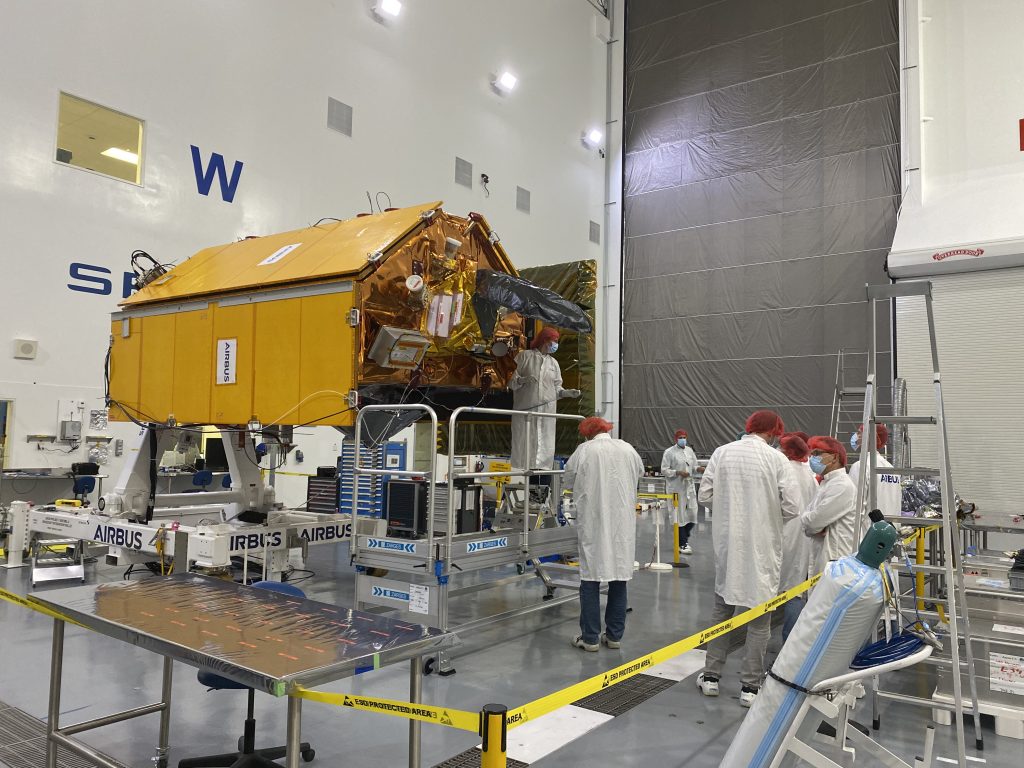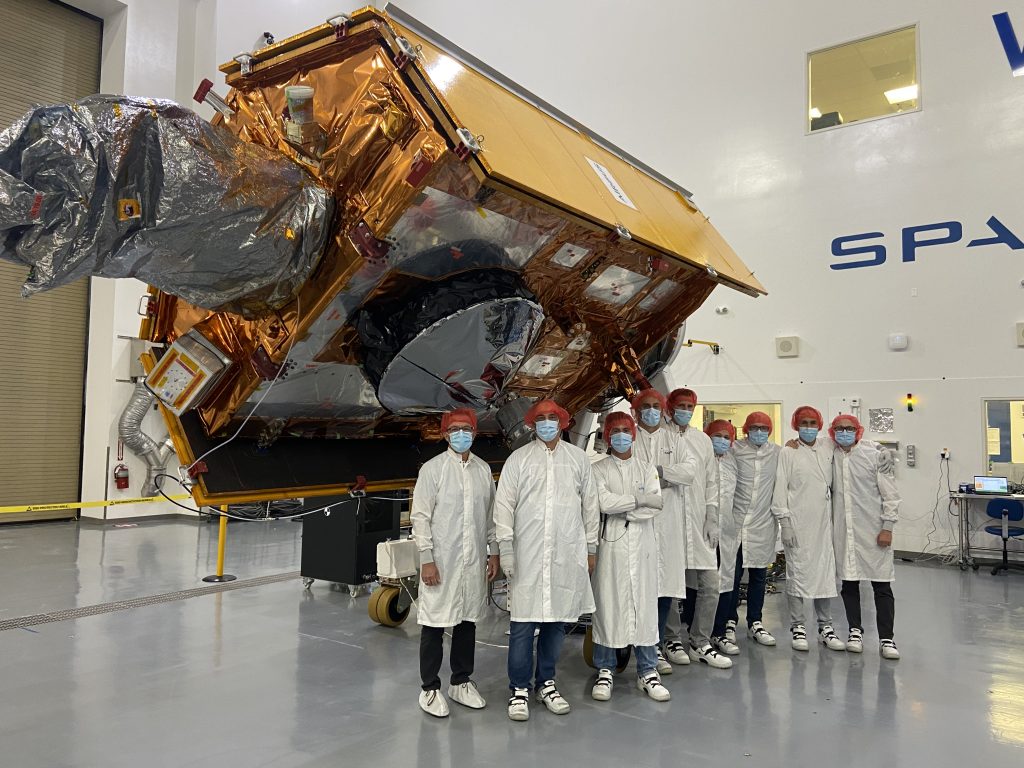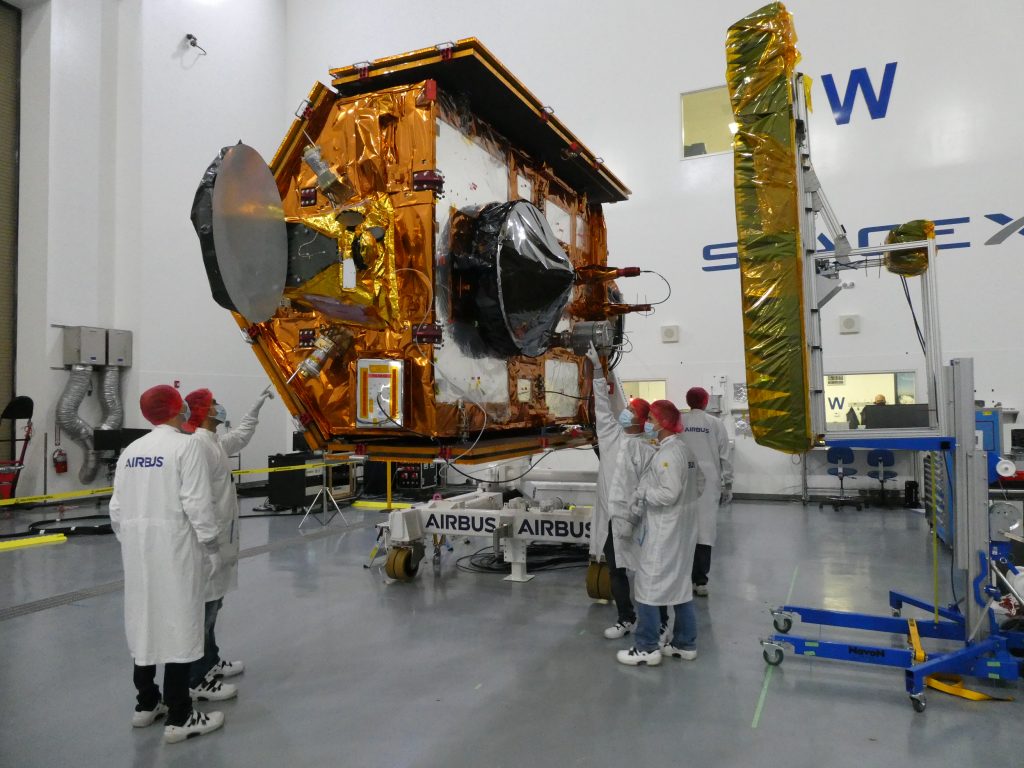With less than a month to go before a SpaceX Falcon 9 takes Copernicus Sentinel-6 Michael Freilich into orbit, preparations are forging ahead at the launch site.

Sentinel-6 team during battery testing (Credits: ESA)
After the satellite was unpacked, it underwent a series of tests to make sure that nothing had been damaged during transportation. Then the capacity of the two batteries has been tested: they were charged and discharged in three shifts (day, late and night shift) for a total of 20 hours.
Once the team completed the capacity test, the spacecraft has been powered up to charge the batteries and update the software. The team has used the opportunity to also test telemetry links to ESA’s European Space Operations Centre (ESOC) in Germany and to test the GPS connections.

Checking GPS signals (credits: ESA)
All in all a great achievement for the team with everything working.

The launch campaign team in front of the satellite (Credits: ESA)
After resting for the weekend, the team started with new energies for the important steps ahead.
First, the Poseidon instrument has been checked to ensure it would perform as expected. Meanwhile the launcher Payload Attach Fitting (PAF) has been brought into the clean room ready to be mated to the Payload Adapter (PLA), which will allow the team to perform the first umbilical line measurements.
Then it’s been time for another big milestone on the way to launch: a performance check of the radar altimeter that actually measures the sea level. The main instrument has been switched off for the last time: next switch-on will be once the satellite is in orbit and it will stay on for the whole mission!

Performance check on the radar altimeter (Credits: ESA)
Tasks still to tick off the ‘to do’ list before Sentinel-6’s 10 November launch date include the hazardous job of fuelling the satellite, as well as encapsulating it in the rocket fairing and rolling it out to the launch pad.
We’re getting closer!
From the ESA Sentinel-6 launch campaign team in Vandenberg.
Read more about the Copernicus Sentinel-6 mission.

Discussion: no comments